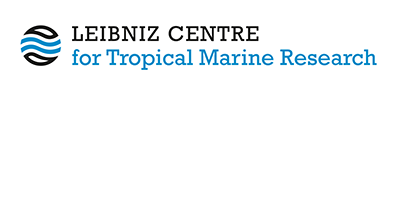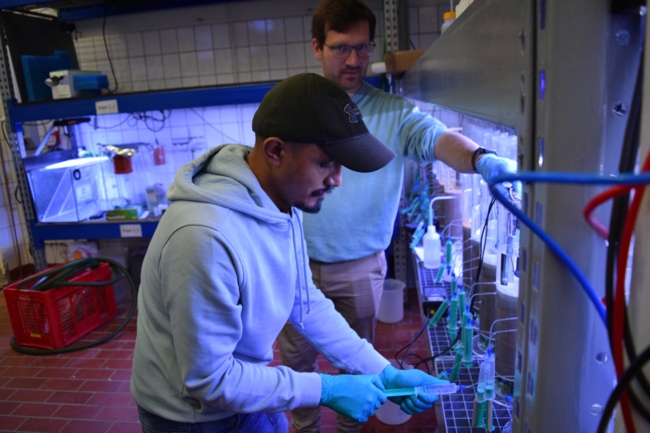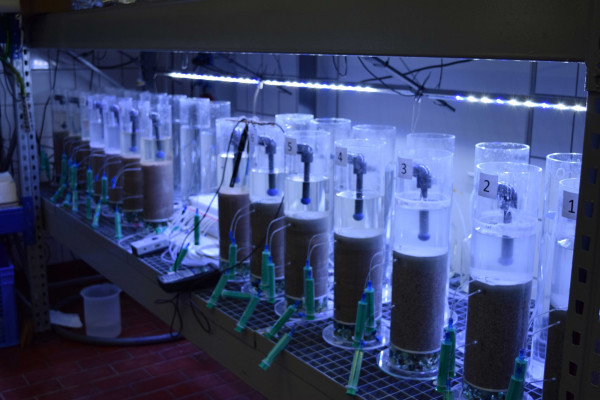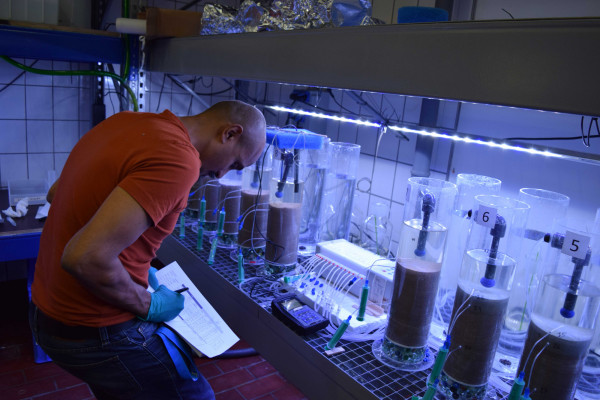13/05/2024 | ZMT's seawater test facility is currently running an exciting series of experiments with a mineral that could be used to remove CO2 from the atmosphere (Carbon Dioxide Removal - CDR). Olivine is a green iron-magnesium silicate and is found in the Earth's upper mantle and in volcanic melts. When it weathers in nature, CO2 is removed from the atmosphere.
Prof Dr Nils Moosdorf and Dr Murugan Ramasamy from the Submarine Groundwater Discharge working group at ZMT are working with Master's student Husna Sheikh to find out which environmental influences affect the weathering rates - i.e. the speed of weathering.
In their experimental setup, the researchers have placed a layer of olivine on sediment in large tubes and filled the tubes with seawater.
Nils Moosdorf explains the experimental procedure: "We influence the water chemistry and measure it regularly to check which chemical reactions are taking place. We measure the salinity and pH value of the water every day."
"At the same time, we take samples so that we can then take a close look at how the water chemistry has changed in the laboratory," adds Murugan Ramasamy.
With the experiments, the researchers want to try to mimic the effect of the tides and find out the effects of different types of seabed on the weathering rates. In a further step, the influence of microbiology, i.e. the algae and bacteria already present on the mineral, on the weathering rate of the olivine will also be investigated.
The series of experiments is scheduled to run for two months. At the end, the researchers hope to gain new insights into the use of olivine as a CDR measure.
"If you know how olivine reacts to which environmental influences accelerate the weathering process in particular, you can find the best places for this method.
The series of experiments is part of the CDR-Mare project RETAKE of the German Marine Research Alliance (DAM).
About RETAKE: CO2 removal by alkalinity enhancement: potential, benefits and risks
The research consortium RETAKE, coordinated by Andreas Oschlies from GEOMAR Helmholtz Centre for Ocean Research Kiel, will assess the potential, feasibility and side effects of various forms of marine alkalinity enhancement (AE) as a means to reliably and sustainably remove CO2 from the atmosphere. Increased ocean alkalinity reduces the activity of CO2 in seawater, and prompts an enhanced flux of CO2 from the atmosphere into the ocean, thereby reducing the atmospheric CO2 concentrations. RETAKE will examine a range of mineral alkalinity sources with respect to dissolution kinetics, CO2 sequestration potential and side effects on chemistry and biology. Laboratory studies and mesocosm experiments of AE in benthic and pelagic systems will simulate realistic environments with focus on the Baltic and the North Sea. A hierarchy of numerical models will be used to simulate deployment in German coastal waters and elsewhere, and to extrapolate experimental results from local to regional and global scales. Permanence and accounting of carbon storage as well as monitoring, detection and attribution issues will be examined against the background natural variability. An investigation of economic aspects and the relation to the U.N. sustainability goals will complete the comprehensive assessment in order to inform policymakers about the feasibility, overall sequestration potential and environmental risks of ocean alkalinity enhancement.
More about the research consortium: https://retake.cdrmare.de/en/





















